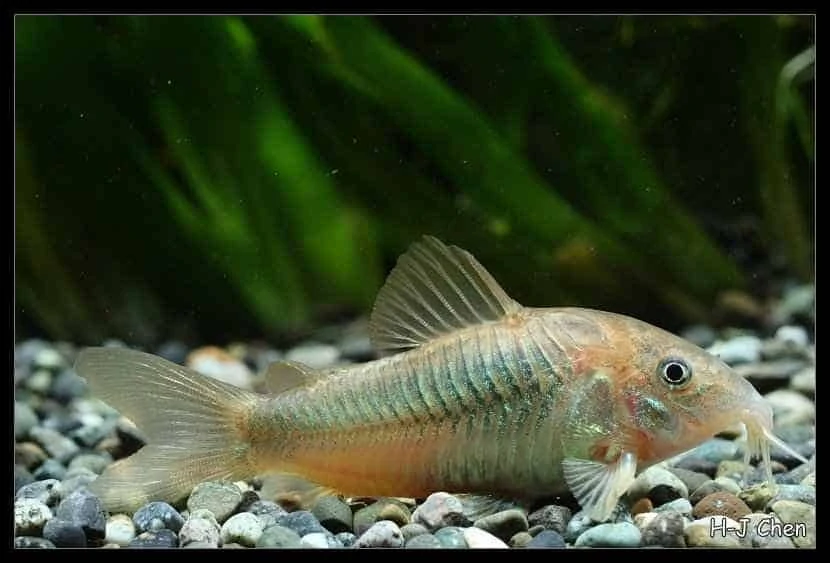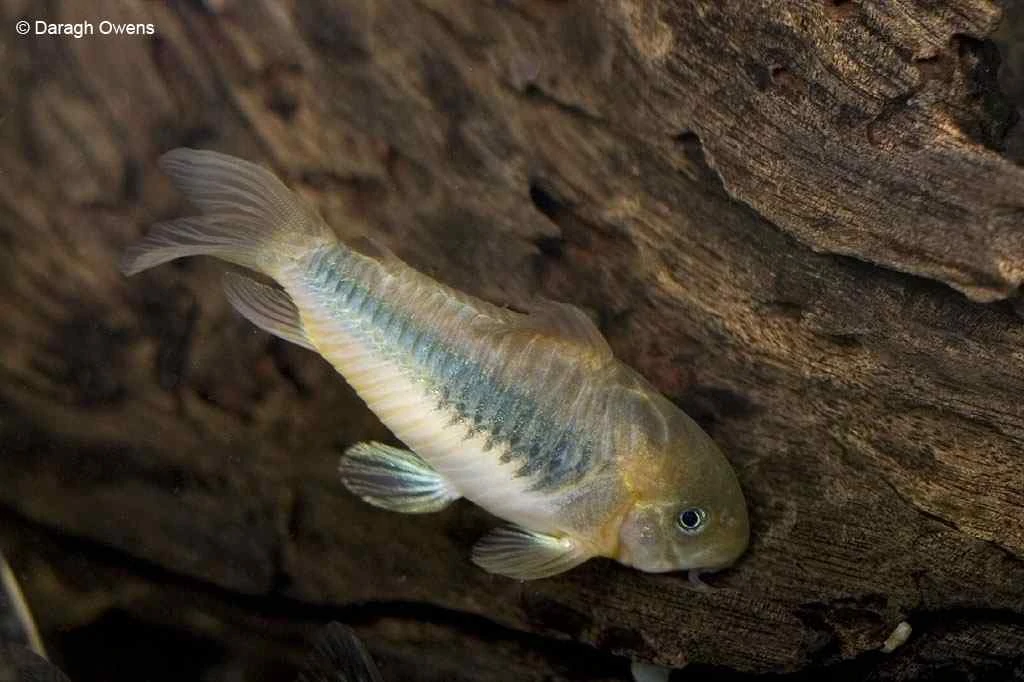Corydoras aeneus
Corydoras aeneus can reach a length of about 8 centimeters. It is one of the most commonly kept armored catfish. The colors on the body can vary from gray to light green and a pinker belly, depending on the light. They also have barbels. The female is somewhat larger and plumper than the male.
Origin
Venezuela, La Plata, South America.
The Aquarium
The Corydoras aeneus requires an aquarium of at least 80 centimeters. Plant the aquarium loosely, use driftwood and stones to make hiding places. Make sure that the water surface remains open, because they sometimes breathe on the surface (gut respiration, they swallow the air and then force it through the intestines).
On the bottom, you prefer to use rounded (filter) sand. They dig through the substrate with their barbels. Using sharp sand or gravel can damage their barbels. The damage causes inflammation where they sometimes even lose their complete barbels. It is, therefore, better to keep them on non-sharp sand. By the way, the barbels grow back slowly as soon as they are kept on sand again.
Water parameters
Temperature: 18-23 degrees Celsius.
PH: 6,5-7,5
GH: 5-20
Diet
Corydoras aeneus are omnivores, they like algae, green food, red, white and black mosquito larvae and food tablets. They are good cleaners and keep the bottom of the aquarium nice and clean, but they still need to be fed alternately.
Character
It is a peaceful schooling fish that you can keep together in a group of 6 or more. Corydoras aeneus are active during the day and can be kept in a community aquarium. Do not keep with cichlids.
Breeding
Breeding Corydoras aeneus is quite easy. They are sexually mature around nine to ten months.
It is best to make a group of more males than females (3/2). The eggs are fertilized in open water and deposited on windows, leaves, stones or in Java moss. Detach the eggs or transfer them to a breeding tank together with the substrate. The eggs hatch after 2 to 3 days. Make sure the eggs are not lit too brightly or they will get moldy. You can raise the fry with cyclops or newly hatched brine shrimp nauplii.
Also see the breeding reports
Transporting Corydoras
Many Corydoras species have a venomous self-defense mechanism to avoid being eaten by larger fish. In case of danger, they can spread and lock the spines in their dorsal and pectoral fins. As a result, they get stuck in the mouth or throat of the attacker, so that another fish will not want to swallow a Corydoras.
Even when catching a Corydoras with a net, they regularly hang in the net with these spines. Be careful when loosening, if the spine gets into your skin it can partially break off and remain in the skin. These wounds are painful and often become inflamed.
In addition to the pointy spines, some Corydoras species can release a toxin into the water when stressed or in danger. When transported in too small a volume of water or too many Corydoras in the small space, this can lead to rapid death among the fish. It is therefore preferable to only transport the Corydoras with other Corydoras and not too much in one bag.
Because little research has been done on this venom, it is not clear whether this venom is spread from the gills or from the spines. It is thought that at least the Corydoras adolfoi, Corydoras arcuatus, Corydoras melini, Corydoras metae, Corydoras panda, Corydoras robineae, Corydoras rabauti, Corydoras atropersonatus, Corydoras sterbai and Corydoras trilineatus have this poison, but it is advisable to pay attention to the other species as well.
Video
Below a very informative video about the Corydoras aeneus in the wild and breeding in the aquarium, unfortunately in German:
Author
Coby
Copyright images
Daragh Owens
J. de Lange


















Reviews
There are no reviews yet.